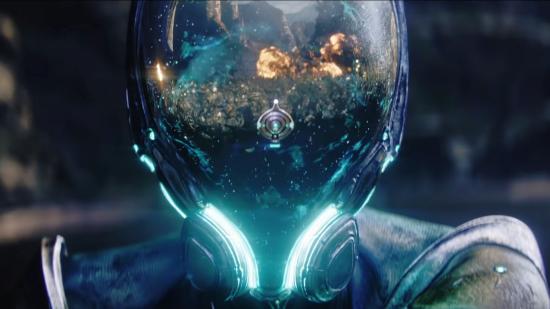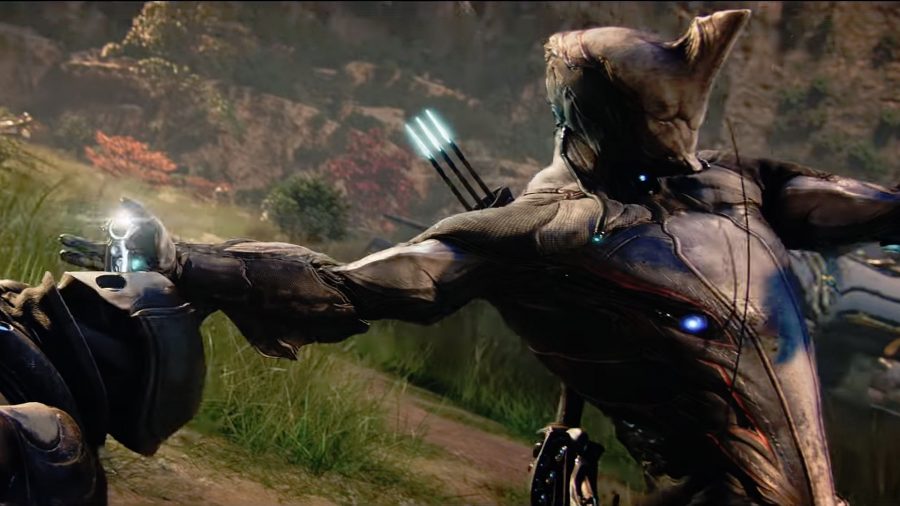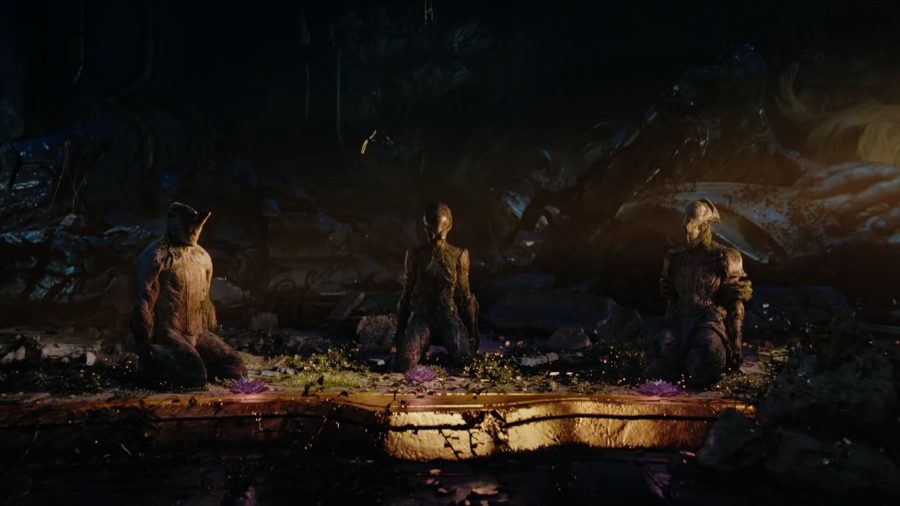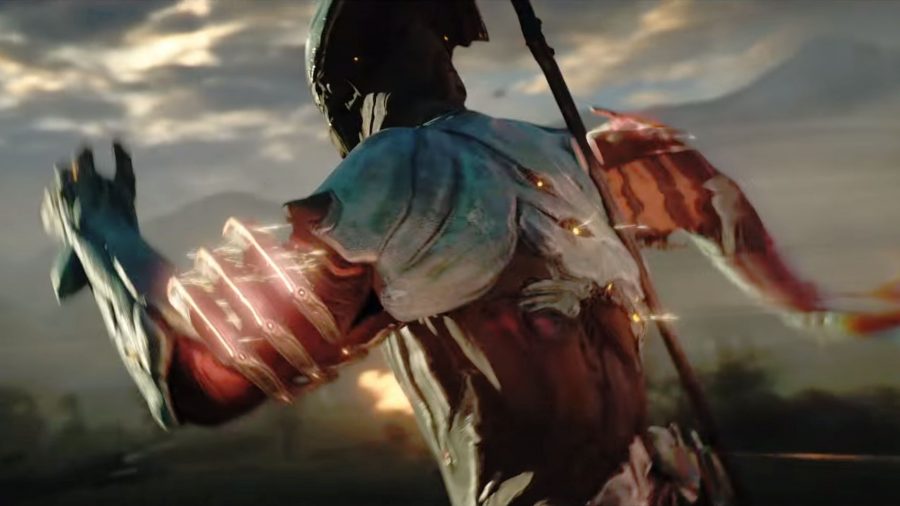In idle moments between shooting, filmmaker Dan Trachtenberg can be found stowed away playing a videogame. While making Black Mirror’s ‘Playtest’ episode his game of choice was Uncharted. The thing with Trachtenberg’s work, however, is that the time he spends playing videogames and watching films often bleed into one another.
If you pause that episode of Black Mirror on the shot of its protagonist, Cooper, as he looks at the shelf stuffed with games, you’ll find some of Trachtenberg and series creator Charlie Brooker’s fondest memories staring back at you. The appearance of BioShock 2 also foreshadows the use of the phrase “would you kindly” later on; another tiny nod to a game that Trachtenberg adores.
It was in another of these quieter moments away from the set that led Trachtenberg to Warframe, though he had to go through Destiny to get there. “The irony is Destiny came out when we were shooting 10 Cloverfield Lane, and I would play that when I got back from set to feel connected to my friends back home,” Trachtenberg recalls. “One of my friends said ‘you know, Warframe is much better than this’ and I was like ‘really? I remember playing that for a minute’. So I fired up Warframe, and now four or five years later that friend storyboarded this cinematic.”
After 200 hours Trachtenberg found himself on Twitter gushing over Warframe. Some back and forth with “whoever was running the Digital Extremes Twitter account” followed, and he eventually met community director Rebeca Ford and creative director Steve Sinclair at E3 to discuss how they could work together.

“They brought it up that they wanted to do a new player rework. That was what I was talking about with them anyway – wanting friends of mine who hadn’t yet played the game to get into it,” Trachtenberg tells me. “The beginning is a little bit challenging to sink your teeth into. It’s a game that has a beautiful meta; that’s what I love. I like the Soulsborne games because once you put down the controller, there’s still more to experience by going online, looking at the wikis, watching YouTube videos, and thinking about builds. But that’s not always right upfront [in Warframe], and you don’t have an easy access point to that. So we talked about crafting this awesome, fully CGI cinematic for the opening.”
Much like Trachtenberg’s episode of Black Mirror, you can find plenty of his prior years in the freshly crafted Warframe cinematic. While his filmography tends to borrow from his experiences of gaming, though, this gaming cinematic has traces of Hong Kong cinema.
“It’s all the kind of choreography that I loved watching from those Jackie Chan and Jet Li movies,” he explains. “The interesting thing is, American cinema leans towards very fast-paced editing and very visceral camera work so that you feel the action, whereas a lot of Hong Kong movies shoot very wide-screen, composed, and objective shots so you have real clarity for the action. I’ve always yearned for the combination of the two; there’s a way to shoot action that you feel but which is also coherent. That was the big impulse for this; to draw on all those influences to make the action the way that I have always wanted to see it.”
There’s also some common ground with horror in Trachtenberg’s approach to action and sci-fi. One of his guiding principles for the genre is that a good horror film releases fear, rather than bottles it up. As such, I ask him if that belief reflects in his Warframe cinematic or even the upcoming Uncharted film.
“I think the impulse, the reason why we’re all so drawn to action, is because it’s such a cathartic release,” he explains. “It’s the same thing with a horror movie; you really get to build on the suspense and finally you’re relieved when the scare happens, and you make the thing that was bothering you tangible. The unknown becomes tangible. I also think for an action scene that you get to build up the tension, and then you unleash it. It’s one of the things that makes Taken so satisfying – you know that guy is coming with that set of skills. It’s not that the movie has the best-choreographed action scenes, it’s just that it has one of the most refined, most badass structures for the action.”
Of course, Trachtenberg isn’t just bringing childhood memories to this cinematic, but the lessons learnt from previous projects. Mainly, that good sound design is critical to making visuals feel immersive.
“I think that I realised in everything I’ve made since – especially in this Warframe cinematic – is that the visuals look as cool as they do because they sound as cool as they do,” he says. “There’s a moment in the Volt section of this when everything is frozen, and Volt’s running at high speed past a bullet, and then runs into a bullet, and it plinks off his body. That was in the animation for a very long time, and no one really noticed it, and we finally carved out a moment in the sound mix so that you hear it, and suddenly it became this awesome visual moment. But it’s only that cool because we hear it.”
As Trachtenberg continues making films, his love of games is becoming more entwined with his work. Uncharted helped inspire 10 Cloverfield Lane, and now he’s set to direct its movie adaptation. As we wrap up the interview ahead of the trailer reveal at Tennocon, I ask him how it feels to show it to the crowd, and then going on to direct the Uncharted film after that.
“It’s pretty remarkable. I drew on all of those experiences playing third-person action games in all the movie-making stuff that I’ve done. Getting to make that movie is pretty insane. I mean, [the Warframe trailer] and that are real full circle life moments. Achievement unlocked, you know.”



